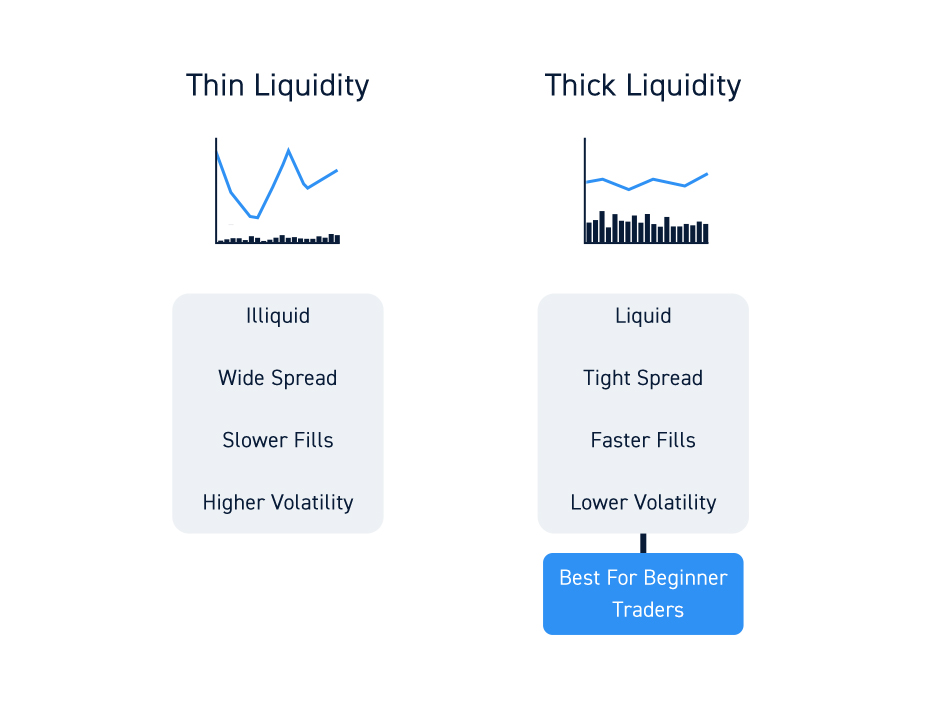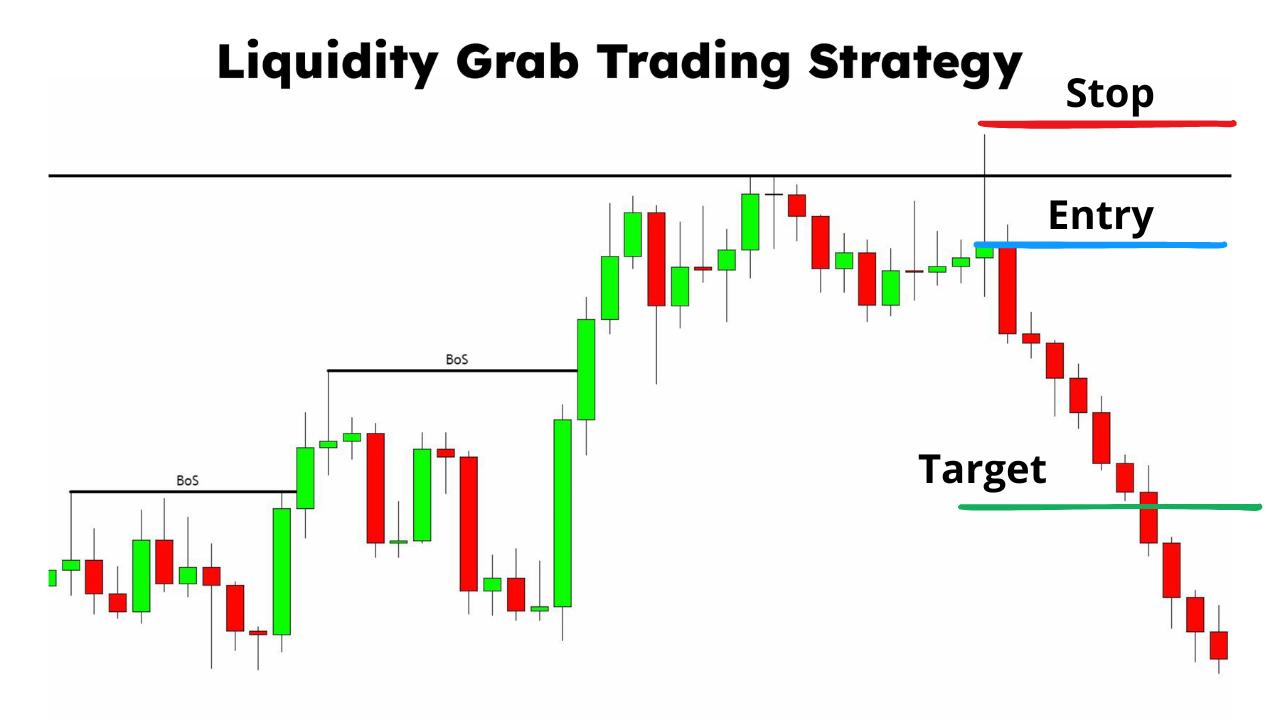Did you know that the Forex market is so liquid that it can easily fill an Olympic swimming pool with trades in just a few seconds? Understanding Forex market liquidity is crucial for day traders, as it directly impacts trading strategies, costs, and overall success. In this article, we delve into what Forex market liquidity means, its significance for trading strategies, and the key factors that influence it. We’ll also explore how to measure liquidity, the role of major currency pairs, and the effects of market volatility and economic indicators. Furthermore, we’ll discuss the implications of low versus high liquidity, the impact of news events, and the strategies traders can adopt to thrive in varying liquidity conditions. With insights from DayTradingBusiness, you'll be equipped to navigate the complexities of the Forex market like a pro.
What is Forex market liquidity and why is it important for day trading?
Forex market liquidity refers to how easily currencies can be bought or sold without affecting their price. High liquidity means there are many buyers and sellers, allowing for quick transactions at stable prices. This is crucial for day trading because it ensures you can enter and exit trades swiftly, minimizing slippage and maximizing profit potential. In a liquid market, you can react to price movements without significant delays, which is essential for leveraging short-term price fluctuations.
How does liquidity affect Forex trading strategies?
Liquidity in Forex trading refers to how easily currency pairs can be bought or sold without affecting their price. High liquidity allows for quicker transactions and tighter spreads, making it essential for day trading strategies. When liquidity is high, traders can enter and exit positions swiftly, reducing slippage and increasing profit potential. Conversely, low liquidity can lead to wider spreads and increased risk, complicating strategy execution. Day traders often prefer highly liquid pairs, like EUR/USD or USD/JPY, to ensure efficiency and reliability in their trades. Thus, understanding liquidity is crucial for optimizing Forex trading strategies.
What are the key factors influencing Forex market liquidity?
The key factors influencing Forex market liquidity include trading volume, market hours, economic news releases, and the number of active participants. High trading volume typically leads to better liquidity, allowing for quicker and larger transactions without significant price changes. Market hours matter because liquidity peaks during major session overlaps, like London and New York. Economic news releases can cause spikes in activity, impacting liquidity temporarily. Finally, a larger number of participants, including banks, institutions, and retail traders, enhances liquidity by providing more opportunities for trade execution.
How can traders measure liquidity in the Forex market?
Traders can measure liquidity in the Forex market using several key methods:
1. Bid-Ask Spread: A narrower spread indicates higher liquidity. Compare spreads across different currency pairs.
2. Volume: Monitor the trading volume for specific pairs. Higher volume usually suggests better liquidity.
3. Order Book Depth: Analyze the order book to see the number of buy and sell orders at various price levels.
4. Market Impact: Assess how much price moves with a certain size trade. Minimal price movement indicates high liquidity.
5. Time of Day: Liquidity varies throughout the day. The overlap of major market sessions (like London and New York) typically has the highest liquidity.
By combining these methods, traders can effectively gauge liquidity and make more informed trading decisions.
What role do major currency pairs play in Forex liquidity?
Major currency pairs, like EUR/USD and USD/JPY, significantly enhance Forex liquidity due to their high trading volumes and tight spreads. They attract a large number of traders, which ensures that buy and sell orders are executed quickly. This liquidity reduces the risk of slippage and allows for more efficient price discovery, making it easier for day traders to enter and exit positions. The presence of institutional players further bolsters liquidity, creating a stable trading environment.
How does market volatility impact Forex liquidity?
Market volatility can significantly impact Forex liquidity by affecting the ease of buying and selling currencies. During high volatility, spreads—the difference between the bid and ask prices—often widen, which can decrease liquidity as traders may face higher costs to enter or exit positions. Conversely, in lower volatility periods, spreads typically narrow, enhancing liquidity and making it easier to execute trades quickly at desired prices. Thus, traders must be aware that increased volatility can lead to slippage and reduced market depth, impacting their day trading strategies.
What are the differences between high and low liquidity in Forex trading?

High liquidity in Forex trading means there are many buyers and sellers, resulting in tighter spreads and easier execution of large orders without affecting prices. Low liquidity indicates fewer participants, leading to wider spreads, potential slippage, and difficulty executing large trades quickly. In high liquidity, price movements are smoother; in low liquidity, they can be erratic and more volatile. High liquidity is ideal for day trading due to better price stability and execution, while low liquidity can increase risks.
How do economic indicators affect Forex market liquidity?
Economic indicators significantly impact Forex market liquidity by influencing trader sentiment and market activity. When key indicators, like GDP growth or employment rates, are released, they can create volatility. High-impact news can lead to increased trading volume as traders react to potential currency value changes. This heightened activity enhances liquidity, making it easier to enter and exit positions. Conversely, during low-impact news or economic stability, liquidity may decrease as traders are less active. Understanding these dynamics helps day traders optimize their strategies around major economic announcements.
What tools can day traders use to analyze liquidity in Forex?

Day traders in Forex can use several tools to analyze liquidity:
1. Order Book: Shows real-time buy and sell orders, providing insight into market depth.
2. Volume Indicators: Tools like On-Balance Volume (OBV) or Volume Profile help assess trading activity.
3. Bid-Ask Spread: Monitoring the spread offers clues about liquidity; tighter spreads indicate higher liquidity.
4. Trading Platforms: MetaTrader and TradingView offer advanced charts and indicators for liquidity analysis.
5. Liquidity Providers: Information from major banks and brokers can indicate market liquidity levels.
6. Economic Calendars: Keep track of news events that may impact liquidity and volatility.
Using these tools helps day traders make informed decisions based on liquidity conditions in the Forex market.
How can news events influence Forex market liquidity?
News events can significantly influence Forex market liquidity by causing rapid price movements and increased trading volume. High-impact news, such as economic reports or geopolitical developments, often leads to a surge in market activity as traders react to new information. This increased demand can enhance liquidity temporarily, allowing for tighter spreads. Conversely, during major announcements, liquidity can drop due to uncertainty, leading to wider spreads and slippage. Day traders must be aware of the timing of key news releases to navigate these fluctuations effectively.
What is the relationship between liquidity and trading costs in Forex?
In Forex, higher liquidity typically leads to lower trading costs. When a currency pair has high liquidity, there are more buyers and sellers, which narrows the bid-ask spread. This reduced spread means traders pay less when entering and exiting positions. Conversely, low liquidity can increase trading costs due to wider spreads and slippage, making it more expensive to trade. Therefore, understanding liquidity is crucial for minimizing costs in Forex day trading.
How Does Forex Market Liquidity Affect Day Trading Success?
Understanding Forex market liquidity for day trading involves recognizing how easily currencies can be bought or sold without affecting their price. High liquidity means tighter spreads and faster execution of trades, essential for day traders looking to capitalize on short-term price movements. Major currency pairs like EUR/USD and USD/JPY typically offer the best liquidity due to high trading volume.
Learn more about: Understanding Forex Day Trading Markets
Learn about How to Find the Right Market for Day Trading
How can a trader improve their chances of success in a less liquid Forex market?
To improve success in a less liquid Forex market, traders should:
1. Focus on Major Pairs: Concentrate on pairs with the highest liquidity, like EUR/USD and GBP/USD, to reduce slippage.
2. Use Limit Orders: Place limit orders to control entry and exit points, minimizing impact from spread widening.
3. Analyze Volatility: Monitor volatility indicators to identify optimal trading times when price movements are more predictable.
4. Keep Position Sizes Small: Limit trade sizes to manage risk and avoid significant losses from sudden price shifts.
5. Stay Informed: Follow news and economic events that could affect liquidity and market sentiment to time trades effectively.
6. Employ Technical Analysis: Use charts and indicators to spot trends and reversals in a less liquid environment.
7. Practice Patience: Wait for high-probability setups instead of chasing trades, which can lead to poor decisions in thin markets.
Implementing these strategies can enhance a trader’s performance in a less liquid Forex market.
What are the risks associated with trading in low liquidity conditions?
Trading in low liquidity conditions poses several risks:
1. Slippage: Executing orders at different prices than expected due to inadequate market depth can lead to losses.
2. Wider Spreads: Bid-ask spreads increase, making it costlier to enter or exit trades.
3. Price Manipulation: Fewer participants make markets more susceptible to manipulation, resulting in unpredictable price movements.
4. Difficulty Executing Orders: Large trades may not be filled at desired prices, causing missed opportunities or unfavorable conditions.
5. Increased Volatility: Sudden price swings can occur with minimal trading activity, heightening the risk of significant losses.
Understanding these risks is crucial for effective day trading in the Forex market.
How do institutional traders impact Forex market liquidity?
Institutional traders significantly enhance Forex market liquidity by executing large-volume trades that facilitate quicker transactions. Their participation reduces spreads, allowing for tighter pricing. When institutions trade, they create more market depth, making it easier for day traders to enter and exit positions. Additionally, their strategies often involve high-frequency trading, which increases the number of transactions and overall market activity. This dynamic helps maintain a more stable environment for day trading, as it minimizes price volatility during peak trading hours.
What strategies can day traders use to capitalize on liquidity?

Day traders can capitalize on liquidity in the Forex market by employing several strategies:
1. Focus on Major Pairs: Trade popular currency pairs like EUR/USD or GBP/USD, as they typically have higher liquidity, leading to tighter spreads and more predictable price movements.
2. Use Limit Orders: Place limit orders to enter or exit trades at specific prices, ensuring you can take advantage of liquidity without slippage.
3. Monitor Economic News: Pay attention to economic releases and news events that impact currency pairs. High-impact news can increase liquidity and volatility, creating trading opportunities.
4. Scalping: Implement scalping strategies to make quick trades and profit from small price changes, capitalizing on the high liquidity during active market hours.
5. Time Your Trades: Trade during peak market hours (like the overlap of London and New York sessions) when liquidity is highest, allowing for quicker executions and better prices.
6. Volume Analysis: Use volume indicators to gauge market interest. Increasing volume often signals higher liquidity and can confirm trade signals.
7. Avoid Low Liquidity Times: Steer clear of trading during off-peak hours when liquidity is low, as this can lead to wider spreads and increased risk.
By applying these strategies, day traders can effectively leverage Forex market liquidity for better trading outcomes.
How does liquidity vary across different Forex trading sessions?
Liquidity in Forex trading varies significantly across different sessions due to the number of active market participants.
During the London session, liquidity is typically highest because it's the largest trading center, attracting many traders. The overlap between the London and New York sessions sees peak liquidity, providing the tightest spreads and fastest execution.
In contrast, the Asian session generally has lower liquidity. Fewer participants lead to wider spreads and potential slippage.
Understanding these variations helps traders optimize their strategies, focusing on high-liquidity periods for better day trading outcomes.
Conclusion about Understanding Forex Market Liquidity for Day Trading
In summary, understanding Forex market liquidity is crucial for day trading success. It directly impacts trading strategies, costs, and risk management. By recognizing the factors that influence liquidity, such as economic indicators and market volatility, traders can make informed decisions. Utilizing tools to measure liquidity and adapting to different trading sessions can enhance performance. For those looking to deepen their knowledge and improve their trading outcomes, resources from DayTradingBusiness provide invaluable insights and support in navigating the complexities of Forex trading.
Learn about Day Trading Stocks: Understanding Liquidity